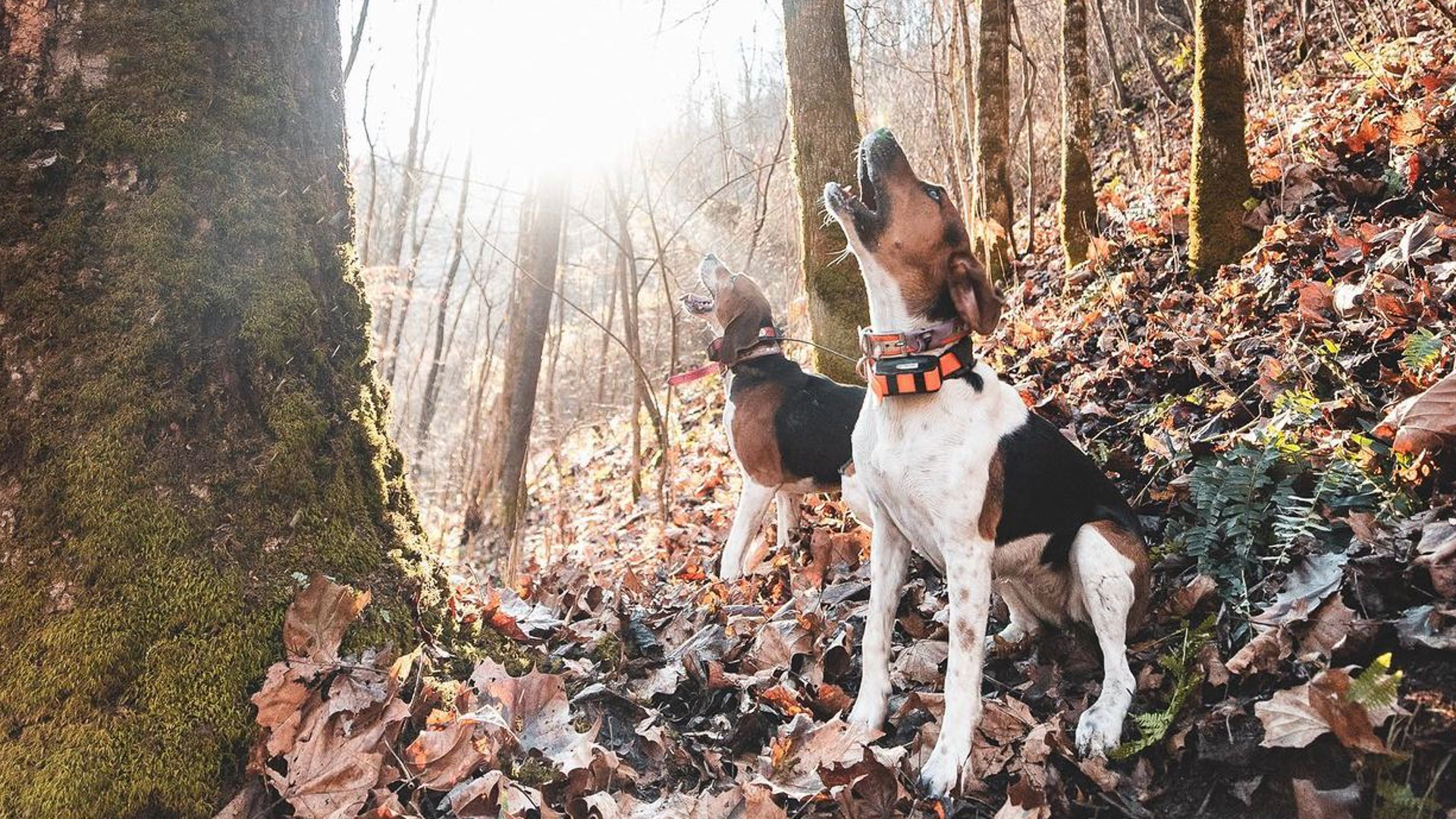Most hunting pursuits have a rich history, but few can compare to following behind a hound as it skillfully tracks wild game. And when it comes to hunting with hounds, no animal in the country will run a dog as hard, or far, as the black bear. You can hunt bears over bait, or shoot them from a stand at distance. But if you want the best that bear hunting has to offer, you must run them with hounds.
The best dogs in bear hunting come from avid European houndsmen, dating back to the 1750s and 1800s. Bear hunting with hounds found its place in North America during the Colonial period, but has reached its stride in more modern times as new hunting dog breeds were established in the early 1900s. Over the decades, one thing has stayed the same: Houndsmen are loyal to their chosen breed of bear dog. There’s no worse offense in their world than disparaging a man’s dog. Do it, and they will run you right off the mountain.
But what breeds make up this short list of best bear dogs? If you’re just getting into bear hunting, it’s likely you are unfamiliar with many of them. What you will find is that the best bear dogs are highly driven, accomplished trackers, and tenacious. In this guide, I’ll cover the topics below. Read straight through, or click on a section to jump in.
Best Bear Hunting Dog Breeds
The Best Bear Dog Kennels
How to Pick a Puppy
Duck Hunting Gear
What to Expect from a Young Bear Dog
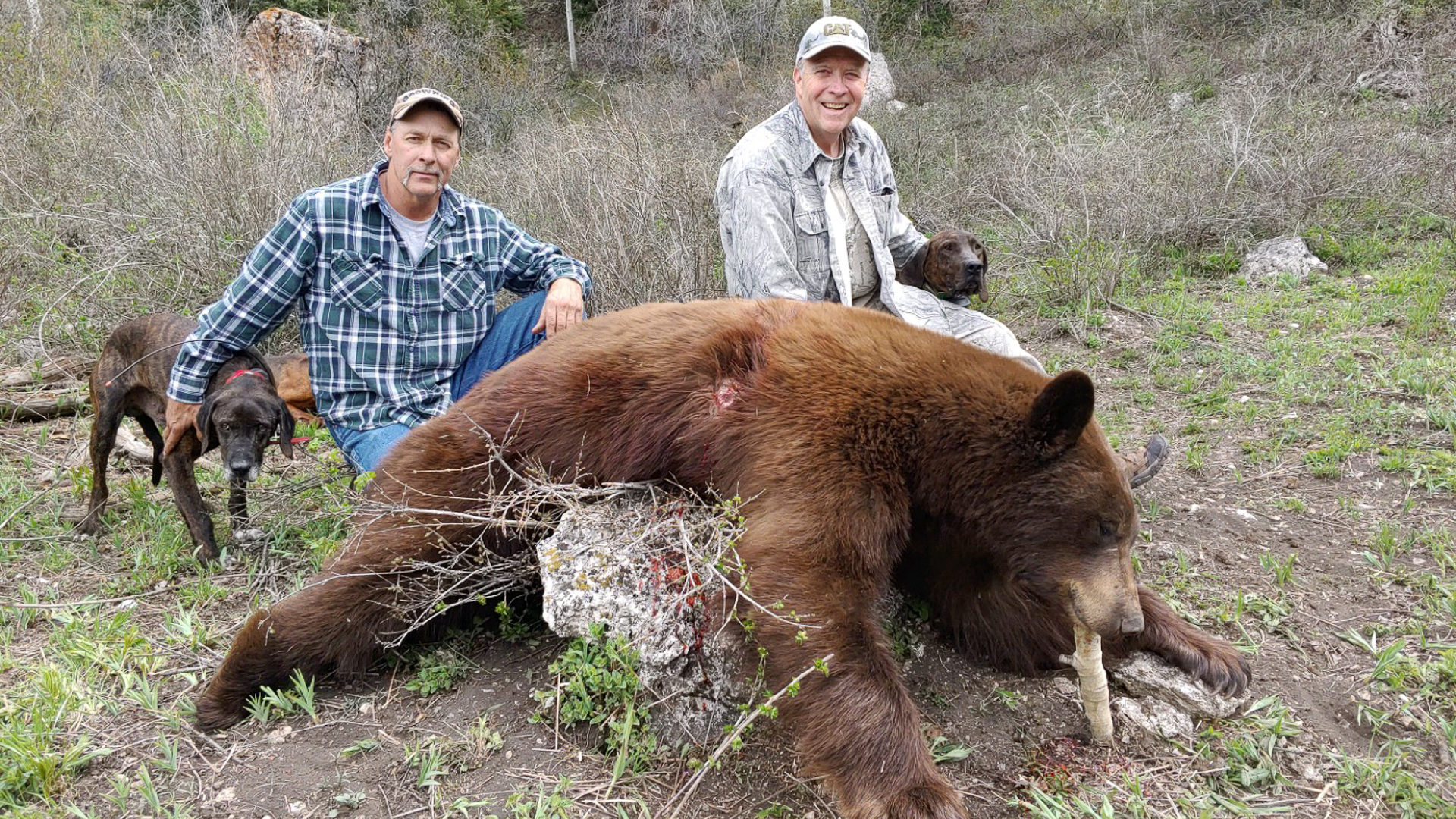
Best Bear Hunting Dog Breeds
Bear hunting hounds are often the same hounds you’ll find chasing coon, fox, and bobcat. Hounds such as the Plott, Walker, redtick, bluetick, black and tan, and redbone are all capable of pursuing bears. In recent years, breeders have built their own line of bear dogs with a mixture of these breeds. Most any dog bred to track or tree game could potentially be a good bear dog. However, there is a small group that have their place at the top of the bear dog list.
Plott
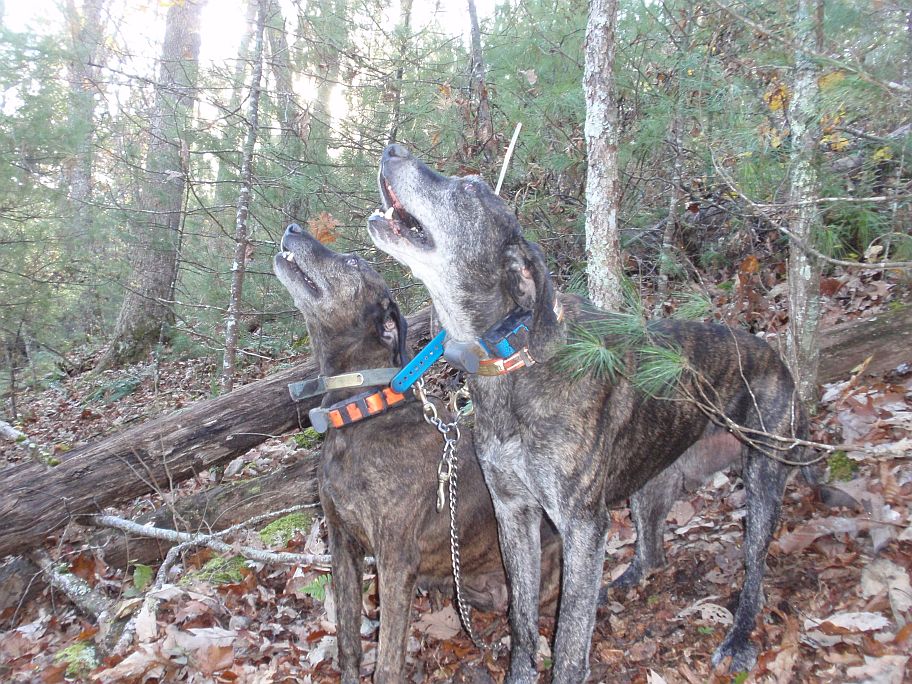
Pros
- Gritty
- Keen tracking skills
- Infinite stamina
- Confident
- Loyal
Cons
- Need time and attention
- Strong willed
Price: $500 – $700
The Plott is the most recognized bear dog breed. Ask a houndsman why they love them so much, and you’ll hear the same word repeatedly: grit. The Plott is the grittiest dog to ever chase a bear. That’s the hill that Plott owners will die on.
“If you want grit and staying power, you better run with a Plott,” says Eugene Walker, a 77-year-old houndsman and breeder, who has been chasing bears since he was 6. “A lot of the other hound breeds are what I call, ‘blisters.’ They show up when the work is all done.
“Then you have, ‘cheerleaders.’ Those are the dogs that run along behind and bark. I like linebacker dogs that wanna get in on the action. If you’re gonna tree a mean bear, you better have some grit – that’s a Plott.”
History of the Plott
Johannes George Plott came from Germany to Philadelphia in 1750. He brought along a few Hanoverian hounds. He later moved to North Carolina where he bought a farm and started a family. Plott managed to keep the dog line pure as he passed it down to family members, including his son, Henry, in 1780. For the next 200 years, the Plott family continued to breed this line of dogs, their popularity growing across the Appalachians and Great Smoky Mountains.
Walker (Treeing Walker)
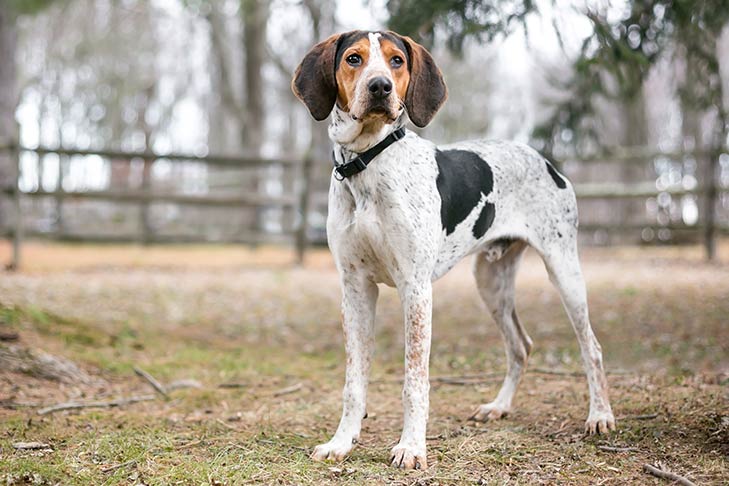
Pros
- Hot-nosed (work the freshest scent trail)
- Vocal
- Bred for speed
- Hunts well alone or with a pack
- Loving / good with humans
Cons
- Very vocal (at home, too)
- More health issues than others
Price: $400 – $800
The Walker hound is another popular dog breed for chasing bears. You’ll see two variations of them: Treeing Walkers and Running Walkers. One is built to put a critter up the tree quickly, while the other tends to run and run.
If you want the best of both, look no further than the Kemp Walker bred by Mike Kemp of Oregon. Kemp’s line of Walkers was bred to deliver the tenacity of a dog that can run, plus treeing ability. The result is one of the best bear dog lines to ever run the mountain. They have the drive to run, and catch, with an intelligence that’s hard to beat.
Josh Ilderton of the popular hunting show, “The Untamed,” has been hunting bears for decades. His dog of choice is the Walker cross from Kemp.
“Those dogs are tough to beat,” says Ilderton. “They can go all day and do what it takes to put a bear up a tree.”
History of the Walker
The Treeing Walker coonhound came out of the colonial era from crosses of English foxhounds. Kentucky breeders John Walker and George Maupin are credited with the breed’s start. Their original dogs were referred to as Walker hounds, used primarily to hunt raccoons. However, in the 1800s, a stolen black and tan dog named Tennessee Lead, was crossed into the Walker hound. The result was a great new line referred to as, The Walker coonhound, Treeing. The name was later changed to Treeing Walker coonhound.
The Running Walker line developed in the mid to late 1800s. They have a strong drive to hunt fox, rabbit, and coyote, but lack the treeing instinct of the Treeing Walker.
English Coonhound (Redtick)
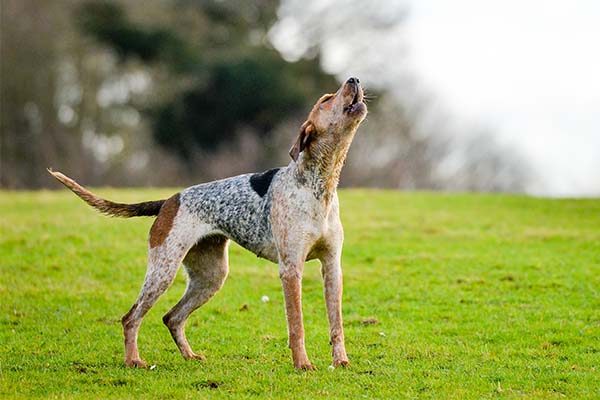
Pros
- Good speed on the track
- Strong nose
- Sociable
Cons
- Can be stubborn
- Strong focus, may miss commands
Price: $800 – $1200
The English coonhound, or redtick, is a popular breed among coon hunters, but also favored by bear hunters. They have a strong nose that is well suited for tracking and treeing all types of game. Bob Olson is a bear dog breeder from Utah. He’s a Plott man but says redtick’s can pull their fair share of the load.
“Unlike some of their cousins, the redtick was bred in a way that’s better suited for bear,” says Olson. “The redtick was bred for the characteristics that’ll put a bear up a tree. And they have the speed that their bluetick cousin lacks.”
For the most part, the redtick is a good-natured and sociable dog. However, that same strong will that helps them in the field can be challenging when it comes to training. At times, they are stubborn, requiring more patience than other dog breeds on the list. Redticks are focused dogs, a fine quality when it comes to getting work done on the trail, but their one-track mind can often result in tuning everything else out, including commands from their handler.
History of the English Coonhound
Like many of today’s coon and bear hounds, the redtick’s origins can be traced back to the foxhounds that were brought to the U.S. by European settlers in the 17th and 18th centuries. Except for the Plott, most other coon hounds come from this same common ancestry.
The dogs were typically used to hunt coons at night and fox by day. The breed came from Virginia hounds, which were developed over time from dogs brought to the U.S. by President George Washington as well as Robert Brooke and Thomas Walker. They were bred to better adapt to the American landscape.
Karelian Bear Dog

Pros
- High drive
- Strong willed
- Great holding power
- Brave, loyal, tenacious, cautious, independent, affectionate
- Extremely protective
Cons
- Require extra time and attention
- Need daily exercise
- Require disciplined handling
- Territorial
- Can be overly protective
Price: $1,400 – $1,700
The Karelian bear dog is not on the list because of its popularity among bear hunters in the U.S. However, some would call it the best kept secret of the hunting dog breeds, particularly when it comes to the pursuit of black bears.
Originating in Finland, the Karelian was bred to hunt bear and wild boar. However, they are versatile and able to perform a variety of tasks, from hunting both large and small game to working and protecting at home. They are a highly driven breed, strong willed, and incredibly loyal. Other traits of the dog include quick reflexes and a fearless nature, both of which help when going head-to-head with black bears.
In Finland, Karelian dogs hunt in pairs. For this reason, the dogs have been bred as stopping dogs. They are bred to quickly bay, stopping and holding the bear for the hunter. They also don’t bark on a scent trail. They’ll only open up once they have spotted the game they’re after. This trait helps them avoid running off quarry.
History of the Karelian Bear Dog
The Komi dog, also called the dog of Zyrians, is considered to be the origin of the Karelian breed. However, the basic stock dogs originated from the Lagoda’s Karelia, Olonets, and Russian Karelia, where they were used for all different types of game hunting. The breeding started in 1936 with the goal to create a sturdy dog that barks at big game. Then it was agreed that the name of the breed should be the Karelian bear dog. The first standard was established in 1945. The first dogs were registered in 1946.
The breed standard for Karelian bear dogs is a black-and-white marked dog, but originally the breed included dogs with coats of wolf gray, red (like the standard spitz), and black-and-tan.
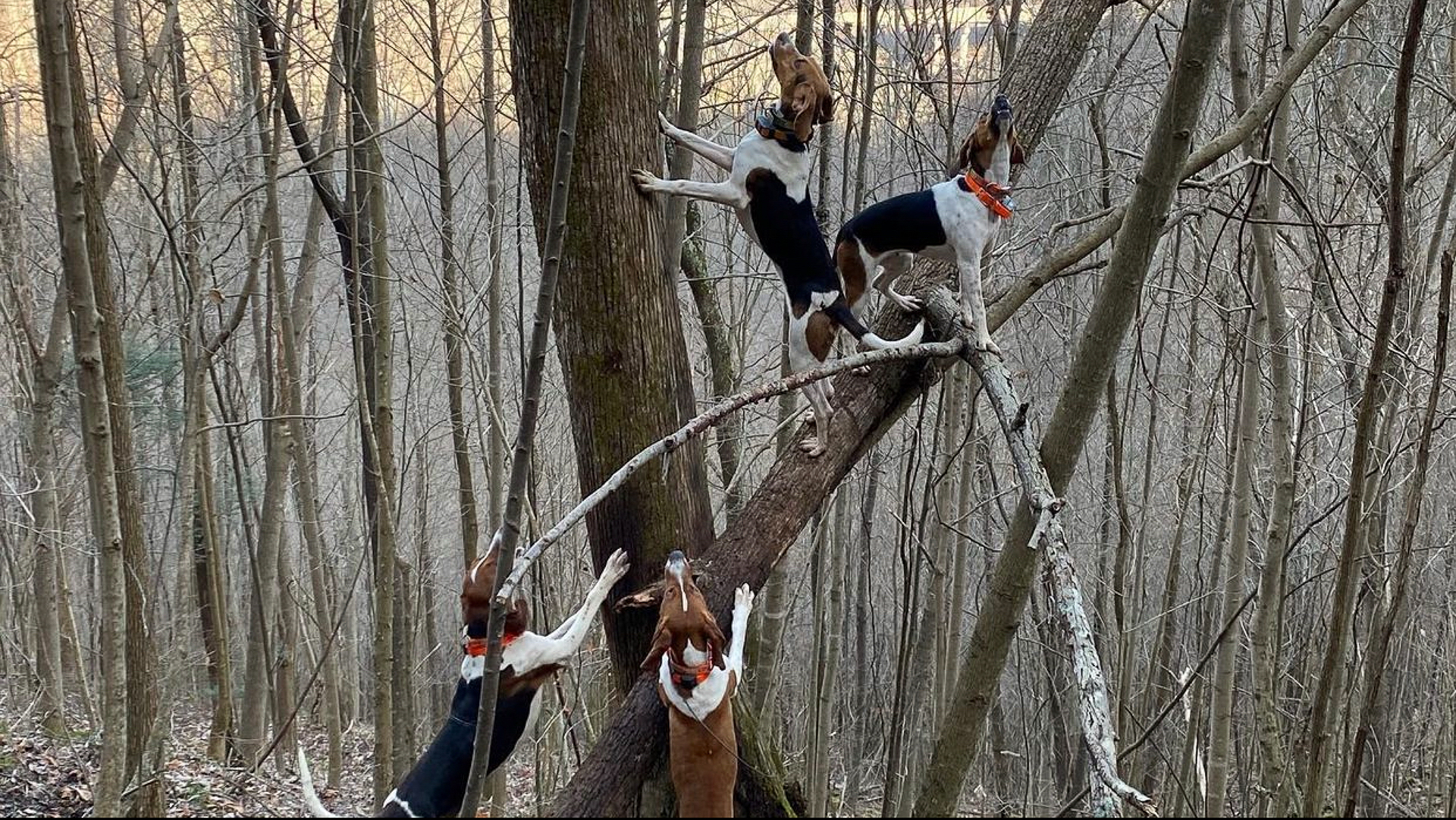
The Best Bear Dog Kennels
Pocahontas Plott Kennels
Eugene Walker, of Pocahontas Plott Kennels in Hillsboro, West Virginia, has been bear hunting from more than 70 years. “I was helping sheep farmers back then,” says Walker. “Bears would come out of hibernation and hit the sheep farms hard. They’d kill 10 to 15 sheep a night, moving from farm to farm.”
Walker has been running the same Plott line for over 60 years. “We’ve run bear and coon over the years, but we figured out over time, it’s hard to have both top coon hounds and top bear,” says Walker. “We’ve concentrated more on bear since the late ‘90s.”
Puppies from this kennel are available each spring. Most have beautiful bawl mouths on track and chop at the tree. This line of Plotts are very smart, aggressive, fast, and cold-nosed dogs, which means they can smell and track older scent trails.
Plott Ridge Kennels
Bob Plott is the great-great-great grandson of Johannes George Plott who first brought the Plott bear hounds to America in the mid-18th century. He’s also a great-great nephew of Henry Plott who introduced the breed to the Great Smoky Mountains in the early 1800s.
His Plott Ridge Kennels takes pride in preserving the legacy of the “old-time multi-purpose Plott dog.” Not only are his dogs a source of pride, but they are also a part of the family heritage. This is no puppy factory, and the family only sells their dogs to those they deem worthy.
Olson Plott Hounds
Bob Olson has been hunting with hounds for 20-plus years. Most of his best dogs have been pure-bred Plotts or Plott crosses. Olson has successfully combined the best Plott characteristics with the scent-tracking ability of the redtick hound, producing superb hunting dogs. Olson looks for trainability, athleticism, speed, stamina, and grit. And that’s exactly what you’ll find in his dogs. Olson’s dogs are known for being smart, fast, and aggressive on the hunt.
Kemp Walkers
As mentioned before, Mike Kemp knows how to turn out some of the best Walker pups in the country with a perfect blend of speed and treeing ability. From east to west, hunters rely on this line of dogs to put bears up the tree. The only way to contact Kemp is by phone: (509) 780-7805.
Penny’s English Coonhounds
Mike Penny continues the family tradition of raising some of the finest English coonhounds in the U.S. It started with his father, Leroy, back in 1957. They’ve raised a long line of champion hounds over the years that specialize in coon, mountain lion, and bear.
Snowy Mountain Bear Dogs
Snowy Mountain Bear Dogs is a Karelian bear dog breeder located in Nashville, Tennessee, providing quality, driven hunting and working dogs for bear, mountain lion, and other big game. Excellence is the standard you’ll find in this line from Josh and Faith Troop. Working ability, health, pedigree, and the breed standards are the cornerstones of their breeding program. Their Karelian bear dogs are regarded as some of the best in North America.
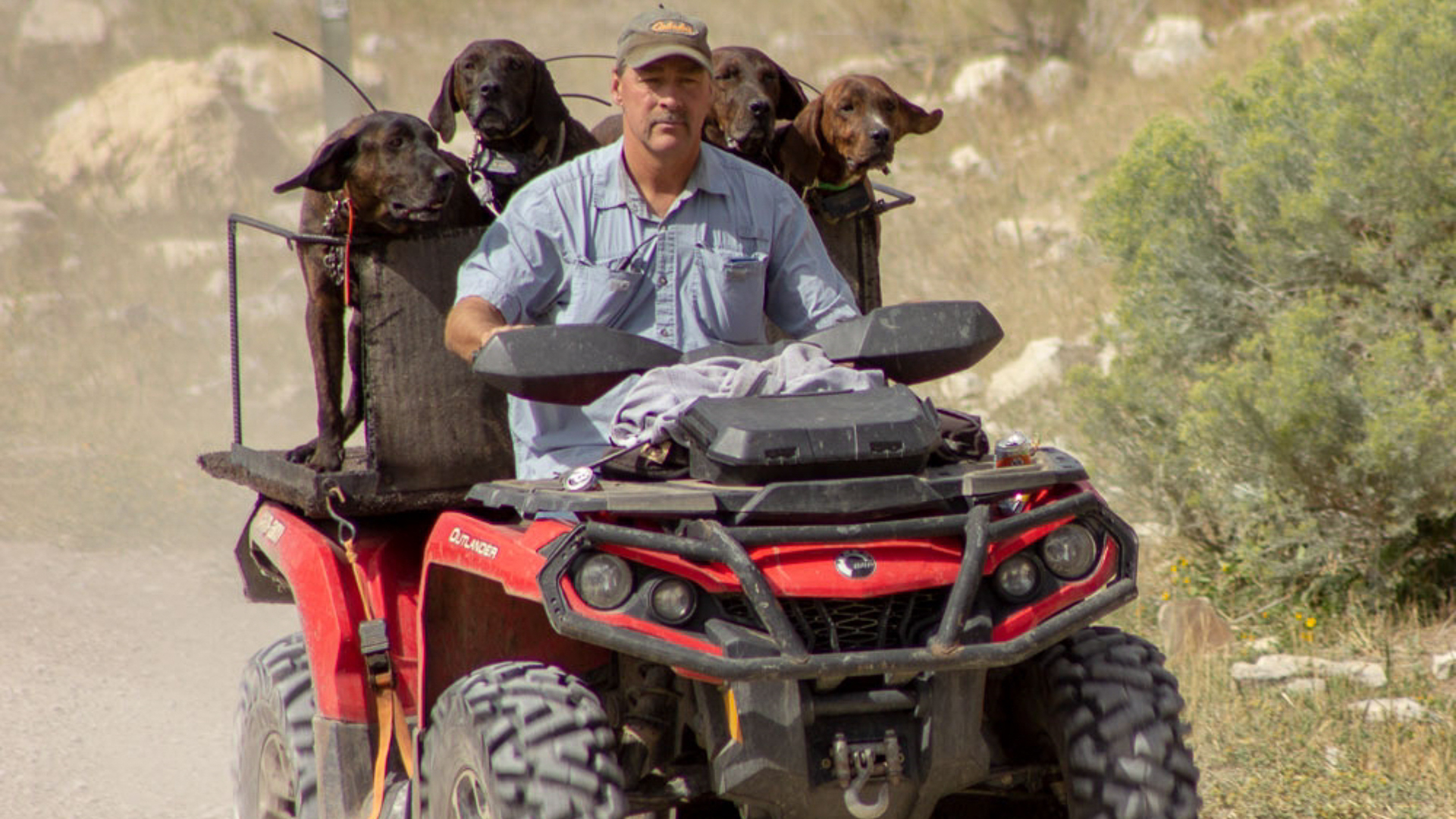
How to Pick a Bear Dog Pup
Picking the right puppy can be difficult. Buyers tend to put a lot of unnecessary pressure on themselves in picking out the perfect dog. Sure, everyone wants to find the “pick of the litter.” But don’t sweat it here. Just keep these basic questions in mind as you go through the process.
- Who are the parents and what is their hunting and health history?
- How do the parent’s hunt? Ask for specifics, like drive; if they are big runners or stick close; and obedience when they’re on a scent trail.
- Are the pups from a line of bear-hunting dogs?
- What is the parent’s temperament?
- Is the puppy active and eager, or shy and timid?
- Do the parents and pup have the physical look (markings) you desire?
What to Look for in a Puppy, from the Experts
- “You want a pup with his nose to the ground looking for something,” says Olson. “Look for that pup that is naturally trailing something, barking at a horse or cow. Find the one that thinks he’s 10 feet tall, bulletproof, and won’t quit.”
- Walker, of Pocahontas Plott Hounds, shares similar advice: “You want a pup that is bold, not timid, or shy. I want good tight feet, so they don’t get sore, and other features like a good square head, medium muzzle, and ears set moderately high on the head.”
- Ilderton usually just gets down on the ground with the pups to see how they respond and interact. “I want to see if they like me or shy away,” he says. “I’m also looking at their feet. I want a tight foot, like a ball of steel. Their feet are so important when it comes to bear hunting.”
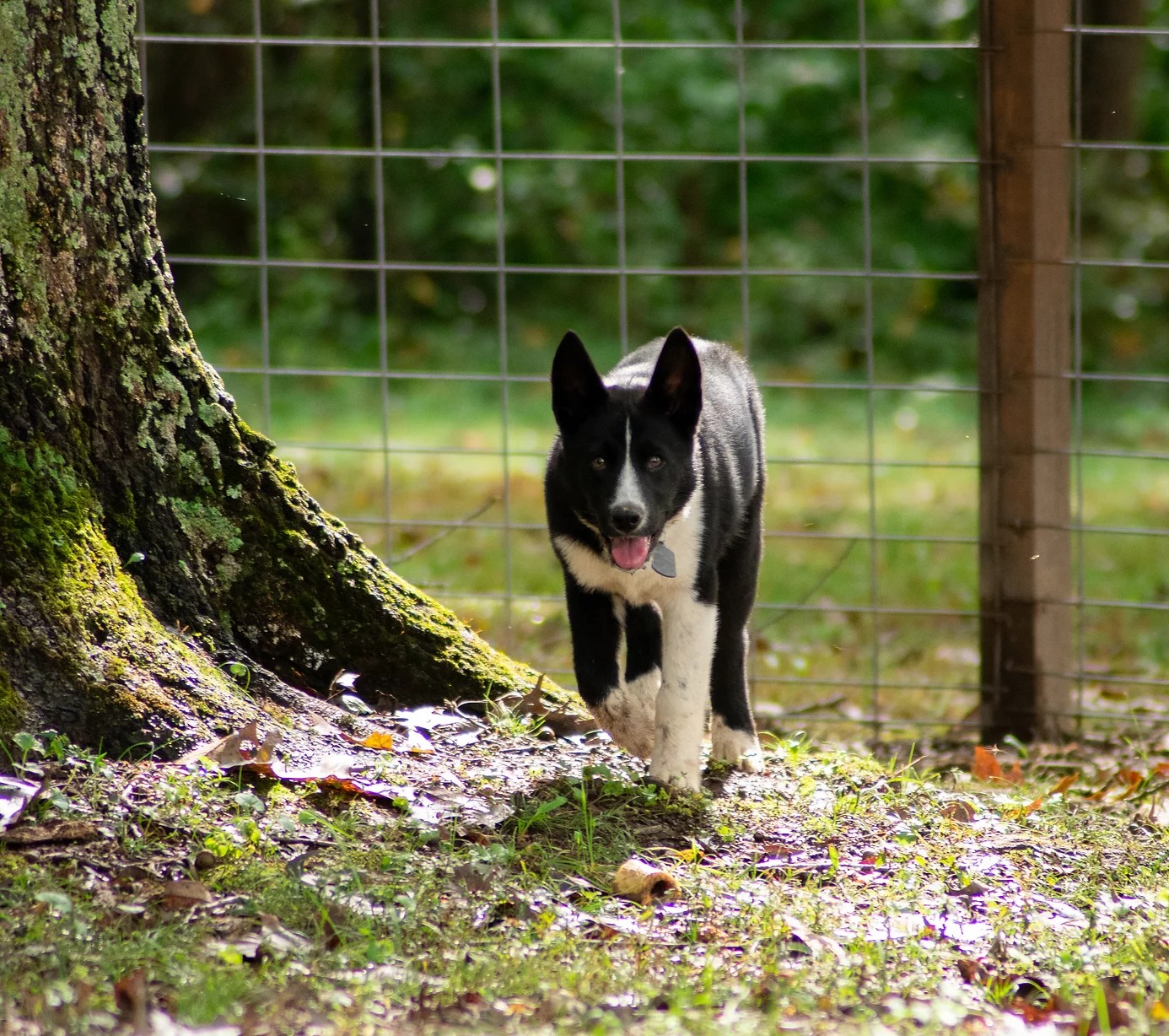
What to Expect from a Young Bear Dog
The qualities in bear dogs (eager, driven, grit, focus, fearless, etc.), are the same qualities that can make training difficult if you don’t lay down the law from the start. These dogs typically have a reputation for being independent and wanting to do things their own way. At the same time, like a lot of dogs, they have the desire to please their owner. So, it’s important to establish a relationship order early on—you’re in charge, not the dog. But you don’t want to be too heavy handed. These dogs a bred to track, so let them if they remain obedient.
A bear dog will likely be around a lot of other people, as well as other dogs. This makes socializing of your pup critical. Start this process as early as possible for best results. Expose them to a variety of other people and animals. You don’t want any surprises here.
In training, Walker likes to start his pups on raccoons at 6 months old. The best thing for young hounds is to get them in the woods. Unlike some bird dogs and retrievers, a bear dog can start effectively hunting from an early age.
“Start them on coons, let them learn to trail a hard, cold coon track,” Walker says. “There are lot of pluses to this type of training for bear, and no negatives. It teaches them to slow down and learn a track and to tree by scent rather than sight.”
Olson starts his pups a little earlier but favors the same training technique with coons.
“I like to start my pups on coons and running tracks at 3 to 4 months of age,” he said. “You want to help that pup hone those tracking skills that are built in to these dogs. Help that pup in the process of trailing after something and how to stand up on the tree. They’ve got it. The training process will bring it out of them.”
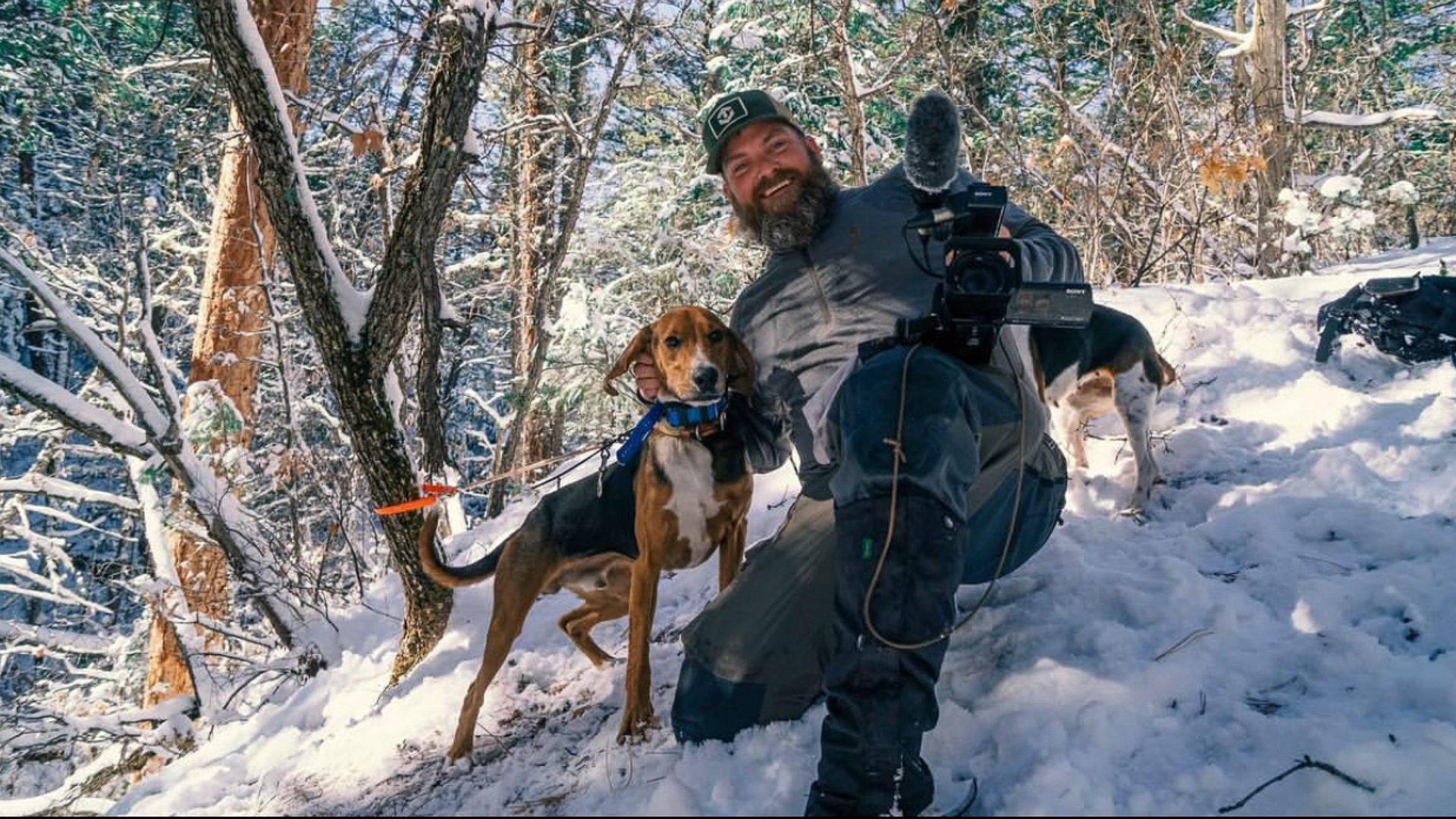
Basic Gear for a Bear Hunting Hound
Before you take the plunge with a bear hunting dog, it’s important to consider the cost of owning one. They aren’t your standard lap dog, and you’re not likely to find them cuddled up calmly at your feet as you sit by the fire place. The best bear hunting dogs are built to work, hunt, and bark. You’ll need a dedicated space for them outside. They are active dogs too, so they need to be occupied with exercise and other distractions, like bones and other dog chews. Also, these dogs are bred to bark, so if you live in a subdivision, be prepared for your neighbors to hate you. Here’s a short list of what you’ll need for your bear dog.
- Kennel and dog box (at home)
- Dog box for transport
- Multiple leads
- Heavy-duty tie-up (chains are best, these dogs will chew through rope and even steel-wire leads)
- Garmin Alpha 200i GPS e-collar and handheld
- Quality dry dog food
- Food and water dish
Read Next: The Best Hunting Dog Breeds for Every Game Animal
Final Thoughts
Make sure to research the lineage of the puppy and the breeder you intend to buy it from. Also, be ready to start hunting your dog immediately. Bear hunting dogs are not like pointers, flushers, or retrievers. They don’t need an extensive amount of training before hitting the woods. These dogs are more primal by nature and ready to hunt at a young age, so do the necessary obedience training and then let get on a game trail.

